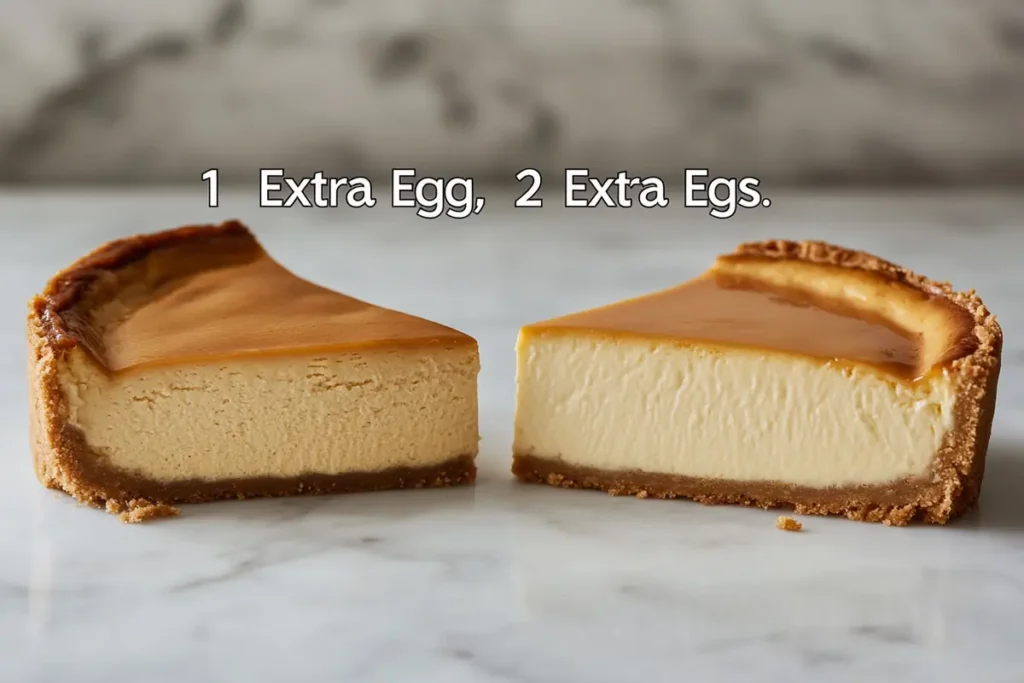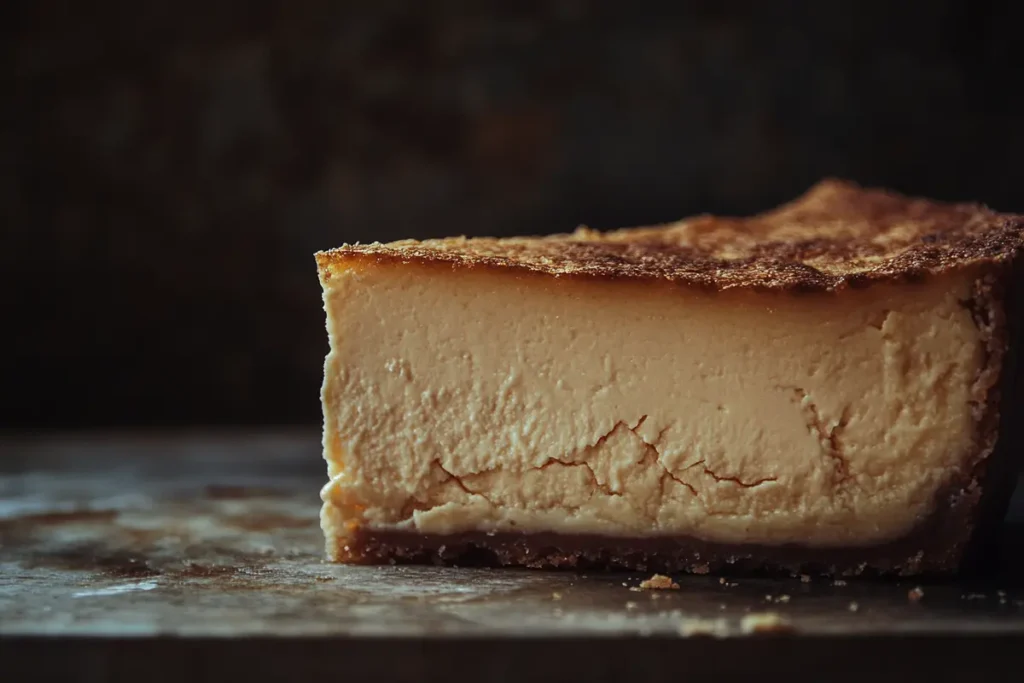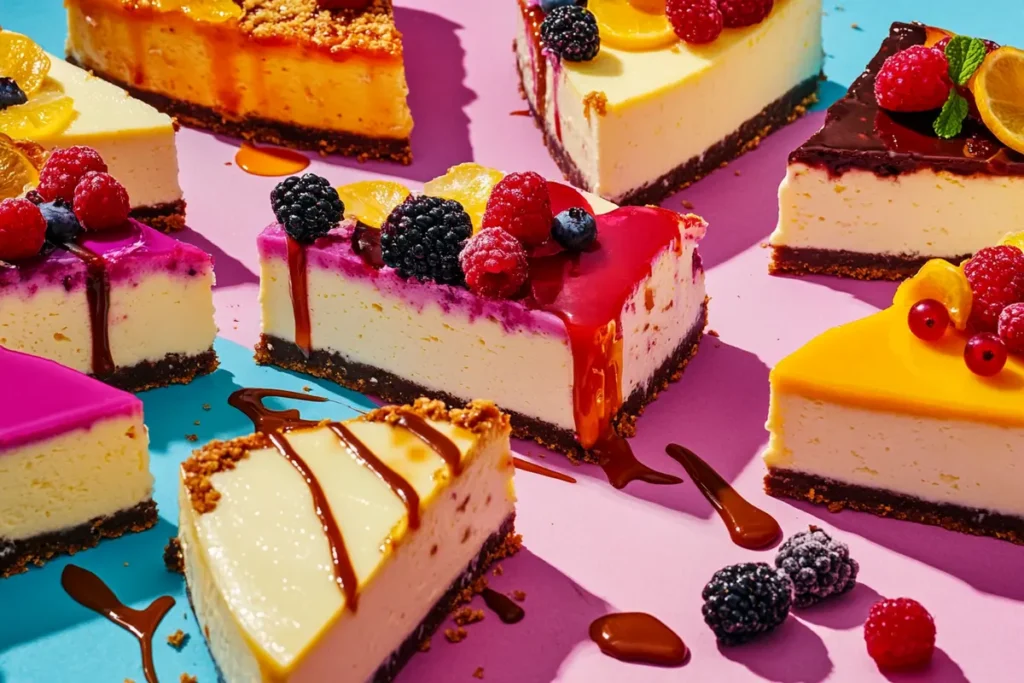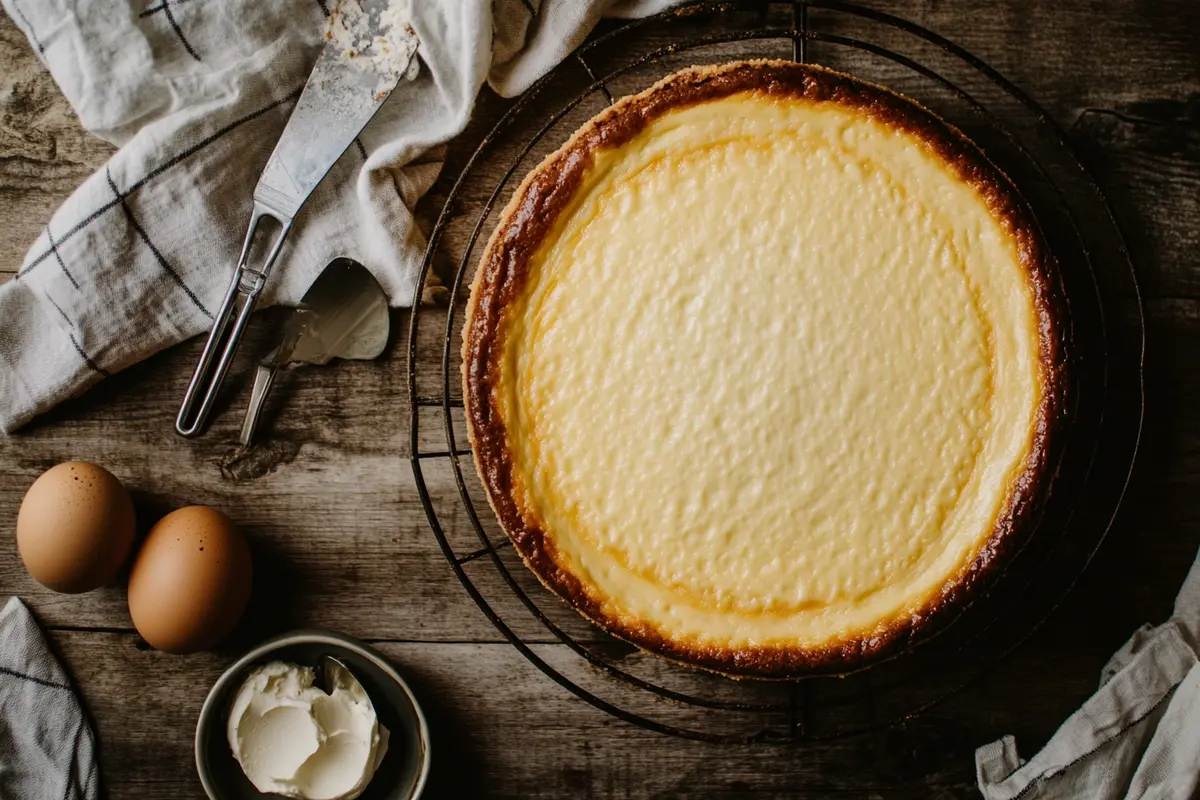What does adding an extra egg to cheesecake do? This question often arises when home bakers experiment with their favorite dessert. Cheesecake, popular in U.S. kitchens, depends on a careful balance of cream cheese, sugar, eggs, and flavorings. Therefore, adjusting a single element, like adding an extra egg, can influence texture, structure, and taste in subtle yet significant ways.
Understanding the Role of Eggs in Cheesecake
Eggs contribute much more than flavor. They provide structure, moisture, and richness. When eggs coagulate during baking, they set the creamy mixture and transform it into a firm, sliceable dessert. Without eggs, cheesecake would lack its familiar custard-like firmness. When asking what does adding an extra egg to cheesecake do?, you must consider how eggs affect the delicate balance of texture and moisture.
In cheesecake recipes, eggs create a stabilized matrix that holds other ingredients together. In addition, they ensure that the cheesecake does not collapse after baking. An ideal cheesecake should be dense enough to hold its shape, yet creamy enough to melt in your mouth. Eggs help you achieve this equilibrium. However, adding more eggs than a recipe calls for might tip that balance, leading to changes in mouthfeel and flavor.
Impact on Flavor and Richness
Eggs bring richness to desserts, including cheesecake. Adding an extra egg can intensify the cheesecake’s richness. This enhancement occurs because eggs contain both fat and a distinctive savoriness. Although subtle, the extra egg can amplify the creamy, indulgent nature of your dessert. Therefore, if you prefer a full-bodied cheesecake, that extra egg might be a welcome addition.
However, eggs also have a characteristic flavor. Too many eggs might overshadow the tangy brightness of cream cheese or the delicate notes of vanilla or lemon zest. When pondering what does adding an extra egg to cheesecake do?, remember that you could mask some nuanced flavors. If your goal is a well-rounded profile where cream cheese shines, you must weigh the benefits of added egg richness against potential flavor imbalance.
How Eggs Affect Baking and Setting Time
Eggs influence how quickly and evenly your cheesecake sets. Adding an extra egg can slightly increase the baking time because there’s more liquid and protein to cook through. Therefore, keep an eye on your oven. Overbaking can lead to dryness or cracking, while underbaking leaves the center too soft.
In addition, extra eggs may cause the cheesecake to brown more quickly. The proteins in eggs aid in Maillard browning reactions at the surface. A slightly darker top might appeal to some bakers who enjoy a hint of caramelized flavor. However, if you prefer a pale, creamy-colored cheesecake, watch the baking process closely.
Adding One Extra Egg vs. Multiple Eggs
When you think about what does adding an extra egg to cheesecake do?, remember that each egg you add builds upon the last. One extra egg might produce a subtle change. Two extra eggs might create a more dramatic shift, turning your cheesecake into a denser, more custard-like dessert.
Therefore, start small. Add just one extra egg to your favorite recipe and note the differences. Pay attention to texture, flavor, baking time, and browning. Keep written notes on your experiment. If you enjoy the result, consider sticking with that adjustment. If you crave an even denser cheesecake, try two extra eggs next time. By incrementally testing changes, you avoid making drastic modifications that could ruin your dessert.

Using Different Types of Eggs
The type of egg you use may also influence your cheesecake. While large chicken eggs are standard in U.S. baking, some bakers experiment with duck eggs or other varieties. Duck eggs have slightly larger yolks and higher fat content. Adding an extra duck egg might produce an even richer, denser cheesecake than adding an extra chicken egg.
However, sticking to standard large chicken eggs ensures more predictable results. Most cheesecake recipes assume large chicken eggs. Therefore, when making changes, consistency matters. If you use farm-fresh eggs that vary in size, weigh the eggs or measure the volume of whisked eggs to maintain consistency. Understanding that even small differences in egg size impact the outcome can help you refine your cheesecake.
Incorporating Additional Ingredients Alongside Extra Eggs
If adding an extra egg changes the texture and density, consider balancing this with other adjustments. For example, if the cheesecake feels too dense, you could slightly reduce cream cheese or add a bit of sour cream. Sour cream introduces acidity and moisture, which can help restore balance. It also provides a tangy note that complements the rich egg flavor.
In addition, adjusting sugar content may help. If the cheesecake feels too rich, slightly increasing sugar might brighten the flavor. Conversely, reducing sugar can let the cream cheese and egg richness dominate. Playing with vanilla extract or citrus zest can also counteract heaviness. Acidity from lemon zest, for instance, can lighten the flavor profile and keep richness in check.
Also, consider the crust. A buttery graham cracker crust or a cookie crust can provide textural contrast to a denser filling. By pairing a rich, egg-heavy cheesecake with a crisp crust, you maintain a pleasing mouthfeel. This contrast prevents the dessert from feeling monotonous, ensuring that each bite excites your taste buds.
Ideal Situations for Adding an Extra Egg
Certain situations might call for adding an extra egg. For instance, if you’re adapting a cheesecake recipe for a special occasion, you might want a creamier, more indulgent dessert. Perhaps you’re serving guests who love a rich, dense texture. Adding that extra egg can help you achieve a memorable cheesecake that stands out from the ordinary.
In addition, if you’re baking a flavored cheesecake with ingredients that need extra support, more egg can help. For example, adding pureed pumpkin for a fall-themed cheesecake introduces moisture. An extra egg can provide the structure needed to support the additional moisture. Similarly, if you fold in chocolate, peanut butter, or fruit purees, an extra egg might keep the cheesecake from becoming too loose.
Potential Downsides of Extra Eggs
Of course, adding extra eggs isn’t always beneficial. If you dislike denser textures, you might find the result too heavy. Some people crave that classic creamy feel that’s neither too dense nor too light. Adding more eggs risks tipping the dessert toward a custard consistency rather than the silky cheesecake you know and love.
In addition, too many eggs can lead to a slightly “eggy” flavor. While subtle, some sensitive palates may notice it. If you’re baking for someone who prefers the bright tang of cream cheese and doesn’t appreciate the underlying egg flavor, extra eggs might detract from the cheesecake’s appeal.

Testing and Tweaking Your Recipe
When you ask, what does adding an extra egg to cheesecake do?, remember that personal preference rules. Everyone’s taste differs. Some value richness, while others prioritize fluffiness. The best approach is to test changes in small increments. Start with your go-to recipe and add one extra egg. Compare the modified cheesecake to the original. Note differences in texture, flavor, and appearance.
Write down observations so you can replicate successes or avoid mistakes in the future. Consider serving taste tests to friends or family and gather feedback. Their opinions might help you decide whether the extra egg improved or worsened the overall dessert.
Troubleshooting Common Issues
If your adjusted cheesecake turns out too dense, consider reducing baking time slightly or lowering the oven temperature by a few degrees. This approach helps maintain a creamier texture, even with extra eggs. If the cheesecake cracks, ensure you’re using a water bath or allowing it to cool slowly in the turned-off oven before removing it.
If the flavor skews too eggy, balance it with a stronger vanilla extract or a bit more citrus zest. A touch more sugar can also mask slight egg flavors. If the cheesecake’s surface browns too quickly, cover it loosely with aluminum foil during the last part of baking.
By troubleshooting in this manner, you gain confidence. You’ll learn that what does adding an extra egg to cheesecake do? depends on how you adjust other factors as well. Over time, you can fine-tune your approach until your cheesecake emerges from the oven with the perfect texture and flavor every time.
Embracing Culinary Creativity
Cheesecake recipes shouldn’t feel rigid. Baking offers room for creativity and personalization. Adding extra eggs is just one way to explore variations. You can also experiment with cream cheese brands, different sweeteners, or unique toppings. Each choice affects the final result. The extra egg angle is just a gateway into the world of cheesecake customization.
If you love a cheesecake that stands tall and firm, the extra egg might become your secret weapon. If you enjoy something more delicate, you might decide extra eggs aren’t for you. Either way, you benefit from understanding the role eggs play. Knowledge leads to better choices, reducing guesswork and frustration..
Cultural Variations and Egg Us
Cheesecake recipes vary worldwide. Some European-style cheesecakes rely more on fresh cheese and fewer eggs. New York-style cheesecakes typically call for several eggs to achieve their signature density. Adding an extra egg can help emulate certain styles. If you admire the richness of New York-style cheesecake but your recipe feels too light, that extra egg nudges it closer to a classic “Big Apple” version.
In contrast, if you enjoy Japanese cotton cheesecake, known for its airy, soufflé-like texture, extra eggs might work differently. These cheesecakes already contain whipped egg whites to achieve a fluffy structure. Adding more whole eggs might throw off the delicate balance. Instead, separating eggs and controlling how you incorporate whites and yolks matters more in such styles.
By understanding these cultural differences, you learn to adapt the “extra egg” concept. The desired outcome depends on the style you aim to replicate. Understanding what does adding an extra egg to cheesecake do? helps you navigate different cheesecake traditions and make informed choices.
Pairing Cheesecake with Toppings and Sauces
If adding an extra egg results in a denser cheesecake, consider how toppings and sauces interact. A rich, dense cheesecake pairs beautifully with bright, tangy fruit sauces. Strawberries, raspberries, or a simple lemon curd can cut through the richness. The contrasting flavors ensure your palate doesn’t tire.
If you find the cheesecake too heavy, a light whipped cream topping can restore balance. Alternatively, chocolate ganache drizzled on top complements the dense creaminess, creating a dessert that feels indulgent and luxurious. Experimenting with toppings and textures can help you appreciate the impact of that extra egg in the broader context of the entire dessert experience.
Moreover, crust selection matters, as mentioned earlier. A crisp, slightly salty crust can offset richness. Nuts, cocoa powder, or spices in the crust can also add complexity. The possibilities are endless. Every choice interacts with the effect of adding an extra egg, reinforcing the idea that baking is a holistic art.

Storing and Serving Your Cheesecake
A cheesecake made with extra eggs might firm up more as it chills. This can simplify slicing and serving. The dessert might hold cleaner edges, making each slice look professional and inviting. On the other hand, if it’s too firm, you risk losing the melt-in-your-mouth quality that makes cheesecake so beloved.
Store your cheesecake in the refrigerator, covered to prevent it from absorbing odors. Allow it to rest at least a few hours before serving. Overnight chilling often improves flavor and texture. For a cheesecake with an extra egg, this rest period allows the proteins to relax slightly, ensuring a smoother mouthfeel than when eaten immediately after cooling.
When serving, consider the portion size. A denser cheesecake can feel more filling. Smaller slices might suffice, ensuring guests enjoy every bite without feeling overwhelmed. By managing portion sizes, you highlight the dessert’s richness without causing palate fatigue.
Frequently Asked Questions
What happens if you add too much egg to cheesecake?
Adding too many eggs can lead to a dense, rubbery texture. The cheesecake might lose its velvety smoothness and become more custard-like. It may also develop an egg-forward flavor that overshadows the tangy cream cheese. Balance is key. If the dessert feels too dense or eggy, reduce the number of eggs next time.
Should cheesecake be dense or fluffy?
Cheesecake can range from dense and rich to lighter and fluffier. It depends on your preference and the recipe you follow. Some regions favor a dense, creamy texture, while others enjoy a fluffier consistency. Adjusting the number of eggs, mixing technique, and baking time allows you to achieve your desired result.
Why add eggs one at a time for cheesecake?
Adding eggs one at a time ensures proper incorporation without overmixing. Overmixing can introduce excess air, leading to a fluffy rather than creamy texture. By blending eggs slowly, you maintain control over the batter’s structure. This careful approach promotes even distribution of eggs, preventing streaks and ensuring a smooth, uniform cheesecake.

